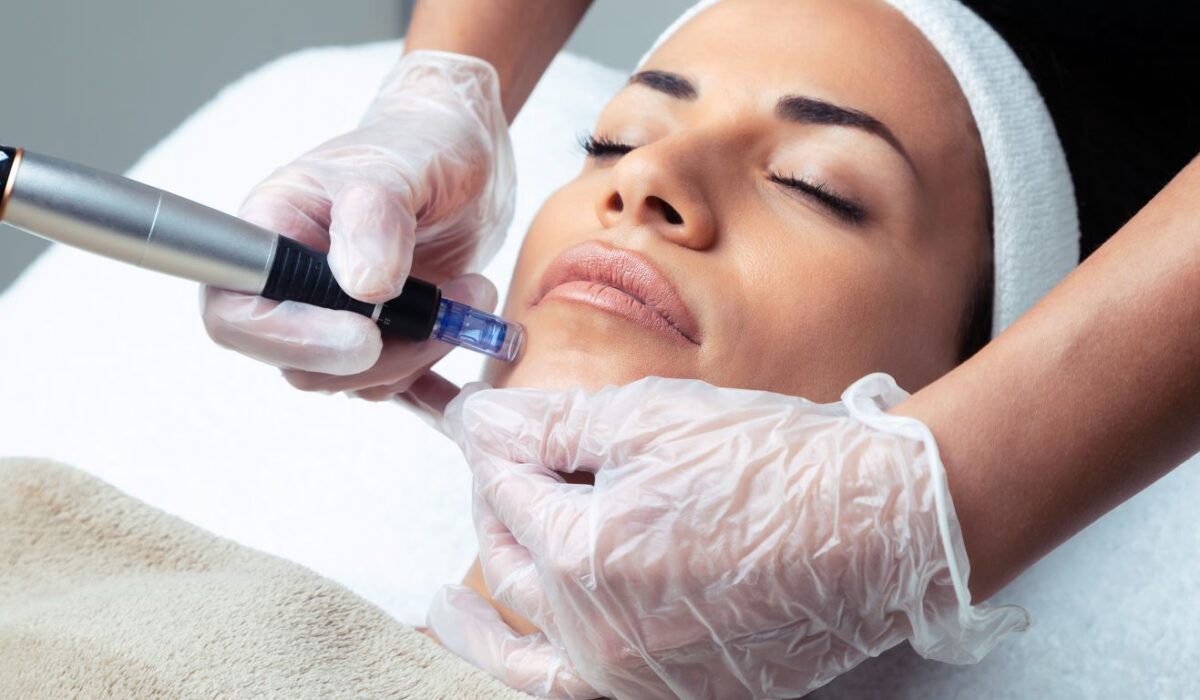Microneedling

FACE MICRONEEDLING:
AVAILABLE ADD-ONS:
EXTRA ZONES:
BODY MICRONNEDLING:
Microneedling: A Comprehensive Guide to Skin Rejuvenation
Microneedling has emerged as a popular non-invasive procedure for improving skin texture, reducing the appearance of fine lines and wrinkles, and treating various skin conditions. This comprehensive guide will delve into the intricacies of microneedling, from the science behind it to its potential benefits and considerations.
Understanding Microneedling
Microneedling involves the use of tiny needles to create controlled micro-injuries in the top layers of the skin. This process stimulates the body’s natural healing response, leading to increased collagen and elastin production. These proteins are crucial for maintaining youthful, radiant skin.
How Does Microneedling Work?
Micro-Injuries: The tiny needles puncture the skin, creating microscopic wounds.
Healing Response: The body responds to these injuries by producing collagen and elastin, which are essential for skin structure and elasticity.
Skin Rejuvenation: The increased collagen and elastin production can help improve skin texture, reduce the appearance of wrinkles, and address various skin concerns.
Benefits of Microneedling
Microneedling offers a wide range of benefits for those seeking to enhance their skin’s appearance and health:
Reduced Appearance of Fine Lines and Wrinkles: By stimulating collagen and elastin production, microneedling can help smooth out wrinkles and lines, giving the skin a more youthful appearance.
Improved Skin Texture: The procedure can refine skin texture, making it smoother and more even-toned.
Reduced Acne Scars: Microneedling can help minimize the appearance of acne scars, leaving the skin looking clearer and healthier.
Enhanced Skin Elasticity: By boosting collagen and elastin production, microneedling can improve skin elasticity and firmness.
Treatment of Stretch Marks: Microneedling can be effective in reducing the appearance of stretch marks.
Enhanced Absorption of Topical Products: Microneedling can create microchannels in the skin, allowing topical products to penetrate more deeply and effectively.
Types of Microneedling
There are several types of microneedling procedures available, each with its own unique characteristics:
Derma Roller: A handheld device with tiny needles that is rolled over the skin.
Derma Pen: A motorized device with adjustable needle depth that can penetrate deeper into the skin.
Microneedling Radiofrequency (RF): Combines microneedling with radiofrequency energy for deeper tissue heating and collagen stimulation.
Platelet-Rich Plasma (PRP) Microneedling: Involves injecting platelet-rich plasma into the skin during the microneedling procedure to enhance healing and rejuvenation.
Microneedling for Specific Skin Concerns
Microneedling can be tailored to address various skin concerns, including:
Aging: Treating fine lines, wrinkles, and loss of elasticity.
Acne Scars: Reducing the appearance of acne scars and improving skin texture.
Hyperpigmentation: Treating dark spots and uneven pigmentation.
Stretch Marks: Reducing the visibility of stretch marks.
Enlarged Pores: Minimizing the appearance of enlarged pores.
Microneedling Preparation and Aftercare
Before undergoing microneedling, it’s essential to consult with a qualified medical professional to discuss your goals and determine if the procedure is suitable for you. They will also provide specific pre-treatment instructions.
Aftercare involves following specific guidelines to promote healing and minimize the risk of complications. These may include:
Avoiding sun exposure: Protecting the skin from the sun is crucial for optimal healing.
Using gentle skincare products: Opt for mild, non-irritating skincare products.
Avoiding harsh chemicals: Avoid using harsh chemicals or exfoliants on the treated area.
Keeping the skin clean and moisturized: Regularly cleanse and moisturize the skin to support healing.
Number of Sessions and Results
The number of microneedling sessions required can vary depending on individual needs and goals. Most people see noticeable results after a series of treatments, typically spaced a few weeks apart. However, it’s essential to consult with a professional to determine the optimal treatment plan for your specific concerns.
Potential Side Effects and Risks
Microneedling is generally considered a safe procedure with minimal side effects. However, some individuals may experience:
Redness and swelling: These are common side effects that typically subside within a few days.
Mild discomfort: There may be some mild discomfort during or after the procedure.
Bruising: In rare cases, bruising may occur.
Infection: The risk of infection is low, but it can be minimized by following proper aftercare instructions.
Choosing a Microneedling Provider
When selecting a microneedling provider, it’s crucial to choose a qualified professional with experience in the procedure. Look for a provider who uses sterile equipment and follows safety protocols.
Conclusion
Microneedling offers a promising solution for those seeking to improve their skin’s appearance and address various skin concerns. By understanding the procedure, its benefits, and potential risks, you can make an informed decision about whether microneedling is right for you.
